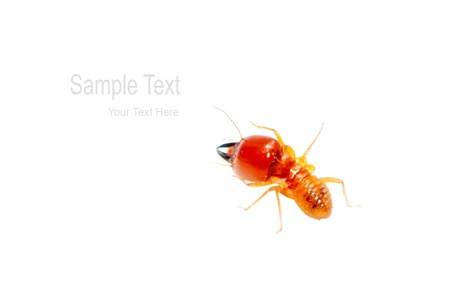All animals are driven by a need for sustenance. Obviously, the amount of food that a particular animal requires depends on the animal’s body size. Animals with relatively large bodies, like elephants, need a significant amount of food in order to keep their energy levels up. Mammals are usually too large to receive an adequate amount of sustenance from small insects. Despite the small size of termites, there are several different mammalian species that prefer to feed on the insects. So how can small insects, like termites, provide large mammals, such as aardvarks, anteaters and armadillos with enough sustenance to survive? Not surprisingly aardvarks are specialized termite predators that sometimes struggle to find enough of the insects to ensure their survival.
Aardvarks feed on a variety of different termite genera, including Allodontermes, Basidentitermes, Cubitermes, Hodotermes, Macrotermes, Microhodotermes, Odontotermes, Pseudacanthotermes, and Trinervitermes. Since aardvarks are larger-sized mammals, they must spend a significant amount of their time searching for termites or ants to feed on. Just about every moment of an aardvark’s waking life is spent foraging for termites and ants. Aardvarks have been known to feed on as many as two hundred different termite and ant nests each night. When aardvarks attack ant nests, their subsequent feeding ritual lasts only a few minutes. However, aardvarks often spend more than thirty minutes taking apart intricate termite nesting-mounds.
Aardvarks have been hunting termites for more than thirty five million years, and during that time they have adapted behaviors that allow them to locate entire termite colonies. Locating termite and ant colonies is essential for aardvarks, as only colonies contain enough termites and ants to meet the nutritional requirements that aardvarks require. Aardvarks ordinarily consume hundreds of thousands of insects in just one single night. An aardvark’s habitat is determined solely by termite and ant availability. This means that aardvarks must relocate to new regions in accordance with the climate. Aardvarks always need to be living in a region with loose soil so that termite and ant meals can be accessed by aardvarks that burrow in the soil. If aardvarks fail to locate hospitable regions where termites and ants are located, they can parish as a result. Even in hospitable climatic conditions, aardvarks often struggle to survive on a diet made up solely of termites and ants.
Follow The Termite Boys on our social media accounts to stay up to date with the latest information, and deals!

